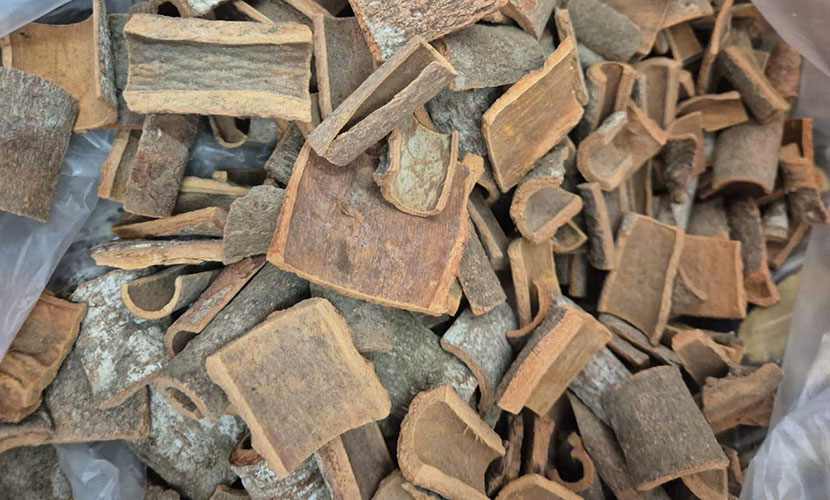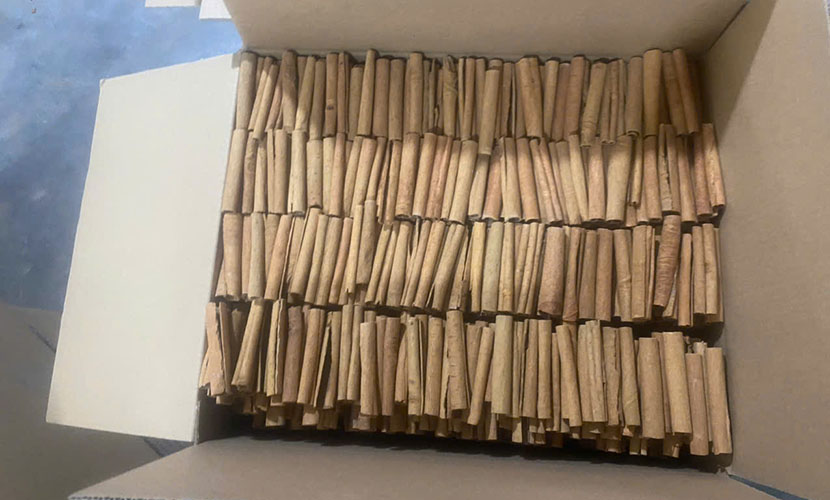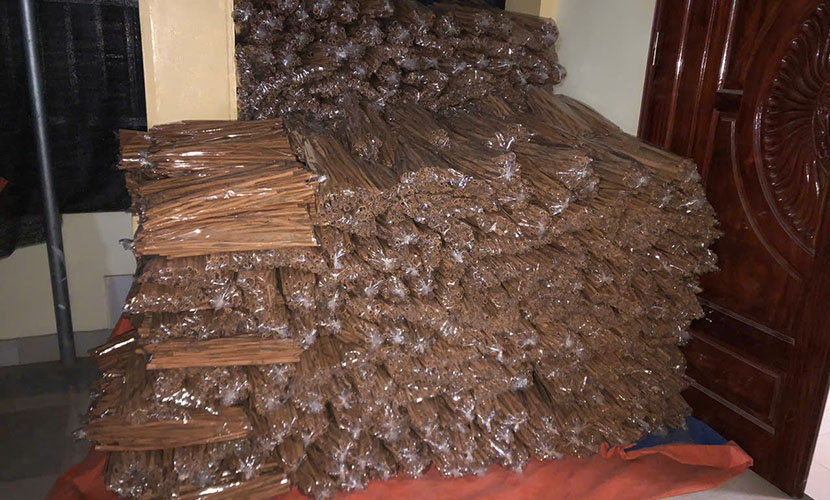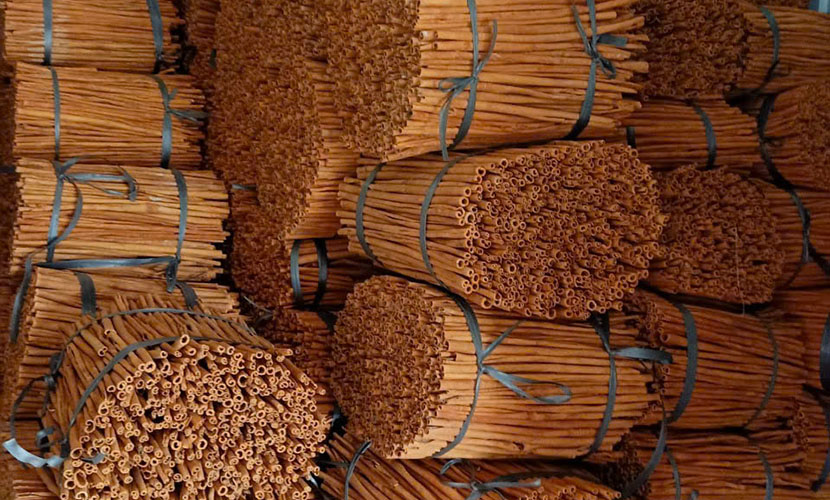
Accounting for more than 70% of Lao Cai’s forest area, cinnamon is the province’s key forestry crop. The province is developing Vietnam’s organic cinnamon production and deep processing.
Cinnamon is currently the main crop in Lao Cai’s forest plantation structure. The annual revenue generates nearly VND 600 billion and serving as a key industrial export crop of the locality.

Organic cinnamon square cut from Vietnam
Cinnamon has been present in Lao Cai since the 1970s. After experiencing various ups and downs, cinnamon tree has affirmed its position and brought high economic returns to local people.
In 2015, Lao Cai had more than 11,000 hectares of cinnamon. However, the area has now expanded to 45,000 hectares, increasing by an average of 5,634 hectares per year. As many as 15 out of 19 ethnic groups in Lao Cai take part in cinnamon cultivation.

Vietnam’s organic cinnamon: 8cm
Currently, the province has 11 factories processing and extracting cinnamon essential oil. Their designed processing capacity ranges from 4,000 to 36,000 tons of raw materials per year. The essential oil extraction technology primarily uses steam distillation. The total purchasing cinnamon output reaches 52,375 tons.
Purchasing prices for fresh cinnamon barks range from VND 24 million to VND 27 million per ton. After drying and sorting, selling prices of cinnamon sticks are around VND 100 million per ton. Split cinnamon is sold from VND 45 million to VND 50 million per ton. Essential oil costs around VND 500 million per ton.
To date, Lao Cai’s cinnamon products have maintained a very stable export market. Lao Cai’s cinnamon has its presence on many countries, such as Singapore, Thailand, and Malaysia. As for essential oil, companies have exported it to China, Europe, and the United States. In addition, a portion of Lao Cai’s cinnamon essential oil is supplied to meet domestic market demand.

Vietnam’s organic cinnamon: long sticks
In order to gradually achieve sustainable cinnamon production, the province has promoted awareness campaigns and developed Vietnam’s organic cinnamon production models. The province currently has 3,503 hectares of cinnamon certified as organic.
At present, cinnamon processing enterprises are investing in production and processing on the organic trend. However, cinnamon plantation and production in the province are facing several challenges:
√ The consumption of cinnamon products (bark and leaves) is entirely dependent on traders. Moreover, there are no cinnamon producers’ association that manage cinnamon production and trading activities. Farmers often grow cinnamon based on trends without planning, which weakens collective strength. As a result, traders can pressure prices, forcing farmers to sell at low prices.
√ Cinnamon export comapnies do not establish strong cooperation and linkages with farmers. Therefore, it would not help them understand and confidently follow training and technical guidance for organic cinnamon care.

Vietnam’s organic cinnamon materials
To capitalize on the potential and strengths of cinnamon, Lao Cai has set out development orientations for cinnamon production. The goal is to form concentration cinnamon cultivation areas geared towards commercial production. The result is to increase the added value and ensure sustainable development of the cinnamon trees. The province aims for at least 35% of plantation forests under organic certification by the year of 2030.
In addition, Lao Cai will focus on developing an organic cinnamon chain under the national brand. Also, the province will gradually expand Vietnam’s organic cinnamon into global markets and making it a key agroforestry export.
Vietnamese source: https://nongnghiepmoitruong.vn/dua-que-lao-cai-vuon-tam-quoc-te-d309185.html
